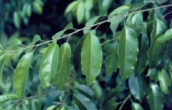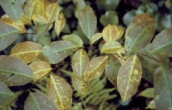Concentrations of ozone that measure near or above the National Ambient Air Quality Standards can have adverse effects on human health and our environment.
Effects on Health
High ozone levels affect children, people with lung disease, and people who are active outdoors. Numerous scientific studies have linked ozone exposure to a variety of health problems, including:
- airway irritation, coughing, and pain when taking a deep breath;
- wheezing and breathing difficulties during exercise or outdoor activities;
- inflammation, which is much like a sunburn on the skin;
- aggravation of asthma and increased susceptibility to respiratory illnesses like pneumonia and bronchitis; and,
- permanent lung damage with repeated exposures.
Sensitive Groups
Everyone has some sensitivity to pollutants in the air we breathe. However, EPA has found that certain groups of people are more sensitive to ozone. Children, people with lung diseases, and adults who are active outdoors are especially sensitive.
- Children - Scientists consider children sensitive to the effects of ozone exposure because they often spend a lot of time outdoors during the summer, when ozone levels are the highest. As children run and play outside, their quick, deep breaths bring ozone to parts of the lungs that are more vulnerable to injury. Respiratory illnesses can further contribute to a child's sensitivity to ozone. Asthma is the most common chronic disease for children and it may be worsened by ozone exposure.
- People with respiratory diseases, such as asthma, chronic bronchitis, and emphysema - There is no evidence that ozone causes asthma or other chronic respiratory disease, but these diseases do make the lungs more vulnerable to the effects of ozone. Individuals with these conditions will generally experience the effects of ozone earlier and at lower levels than less sensitive individuals.
- Adults who are active outdoors - Scientists consider healthy adults of all ages who exercise or work vigorously outdoors a "sensitive group" because they have a higher level of exposure to ozone than people who are less active outdoors. Physical activity (such as jogging or outdoor work) causes people to breathe faster and more deeply. During activity, ozone goes deeper into the parts of the lungs that are more vulnerable to injury.
- People with unusual susceptibility to ozone - Scientists don't know why yet, but some healthy people are simply more sensitive to ozone than others. These individuals may experience more health effects from ozone exposure than the average person.
Other groups of people have been studied to find out whether they are at increased risk from ozone. So far there is little evidence to suggest that either the elderly or people with heart disease are more sensitive to ozone. However, like other adults, these people will be at higher risk from ozone exposure if they suffer from respiratory disease, are active outdoors, or are unusually susceptible to ozone as described above.
What can I do to avoid exposure?
There are safe ways to limit your exposure to ozone without reducing healthy physical activity.
- Sign up for our ozone forecast so you can plan outdoor work or exercise during your day to avoid possible high levels of ozone.
- Use these recommendations for schools and outdoor activities to modify plans for outdoor activities such as recess, lunch, and physical education class.
- If you're involved in an activity that requires heavy exertion, you can reduce the time you spend on this activity or substitute another activity that requires more moderate exertion(e.g., go for a walk rather than a jog).
- No matter how fit you are, cutting back on the level or duration of exertion when ozone levels are high will help protect you from ozone's harmful effects.
- Plan outdoor activities when ozone levels are lower, usually in the morning or evening.
Effects on Environment
Ozone can have detrimental effects on plants and ecosystems. These effects include:
- interfering with the ability of sensitive plants to produce and store food, making them more susceptible to certain diseases, insects, other pollutants, competition and harsh weather;
- damaging the leaves of trees and other plants, negatively impacting the appearance of urban vegetation, as well as vegetation in national parks and recreation areas; and
- reducing forest growth and crop yields, potentially impacting species diversity in ecosystems.


Photo of healthy (left) and injured from ozone exposure (right) black cherry foliage at Great Smoky Mountains National Park in North Carolina and Tennessee. ( Images from U.S. National Park Service )